Using Art to Save Salmon
Columbia River Basin
|
NEW ESRI StoryMaps: What's On Our Shelves & NWNL Song Library & No Water No Life ESRI |
Columbia River Basin
Pat Field
Fish and Wildlife Habitat Biologist Consultant and Sculptor
Alison M. Jones
NWNL Director & Photographer
Pat and Val are a community-driven couple who creatively blend their common environmental interests with their artistic sensibilities. They respect the power of the Columbia River that runs next to their home as much as a nest of fragile eagle fledglings.
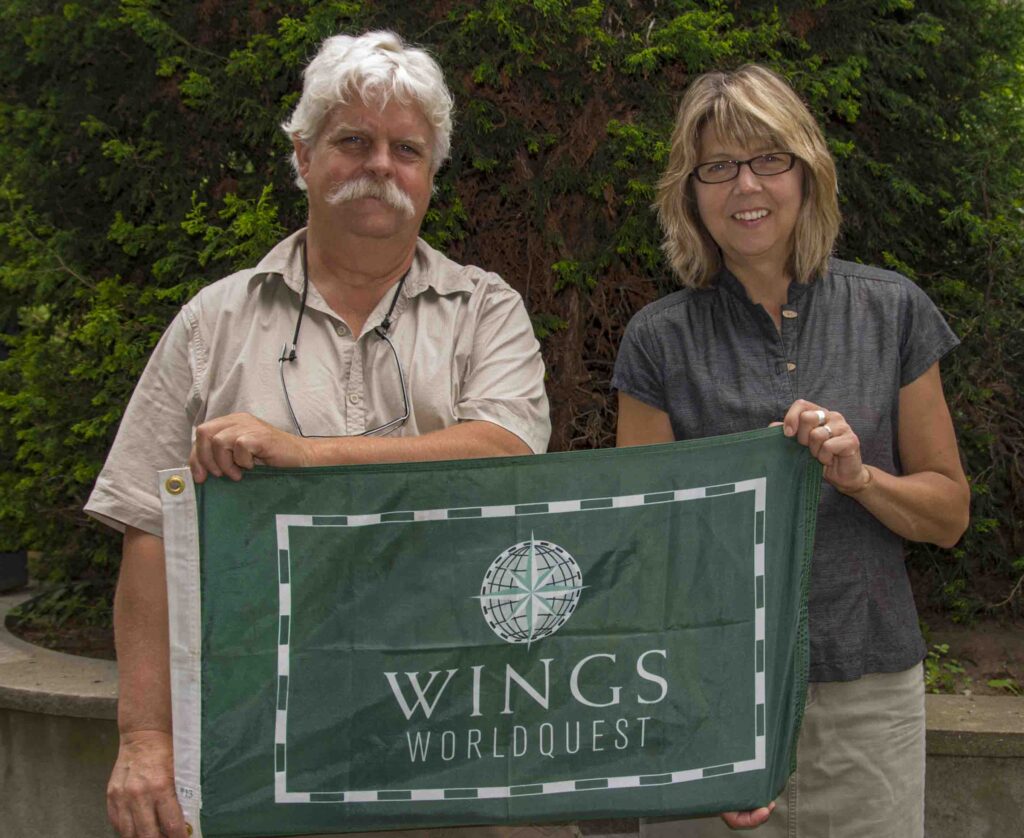
All images © Alison M Jones. All rights reserved.
NWNL Pat, thank you for the tour of your studio. I am very interested to hear how you created this sculpture to be representative of the impacts of dam building on salmon populations.
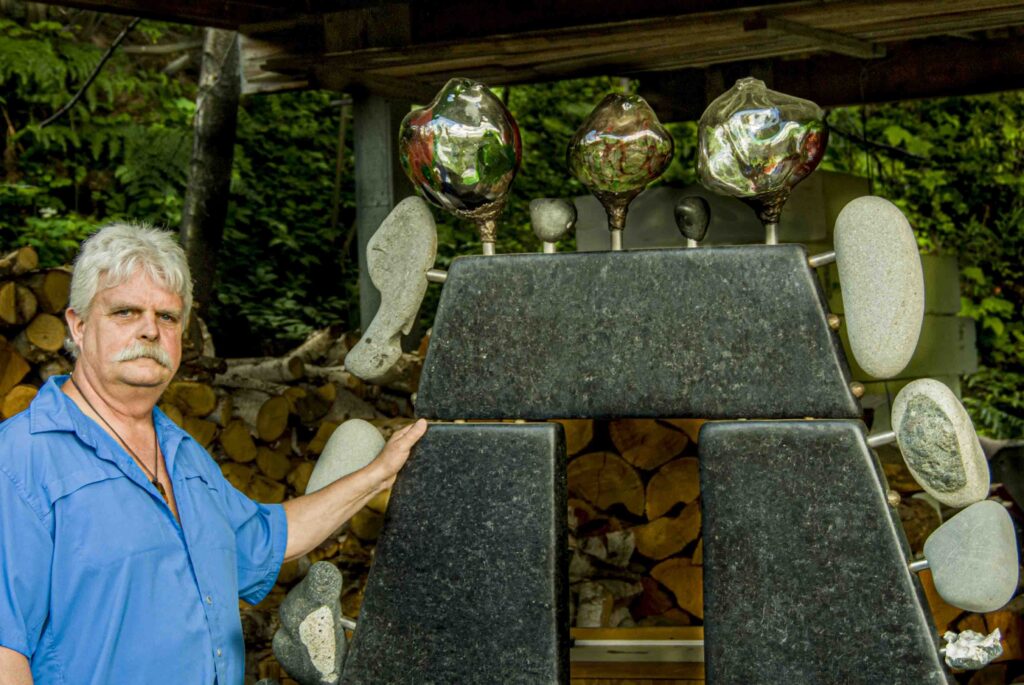
PAT FIELD This piece was done last year as a representational base for selling firs in the Upper Canadian part of this Columbia River Basin. All the logs here are representative of rivers within the Columbia Basin and tributaries that flow into the Columbia Basin on the Canadian side.
I use many materials, including marine items such as these oyster shells. Elements in my sculpture come from the Nespelum River, the Kettle River, the Granby River (a tributary of the Kettle), the Kootenay River and the Columbia River.
I have pieces that include bowls with fish in them to show that we live in a constructed environment. I have a piece with two salmon that shows that them as ghosts, no longer able to pass the dams. I want to show that we live in a heavily constructed environment. That is just the way it is.
And while we are playing God, maybe we should recognize that we are God and that we should be designing our future. We are blessed with what we have left and must take care of it. The fish that remaining in the Columbia River are very important – including the sturgeon, rainbow trout, walleye and bass.
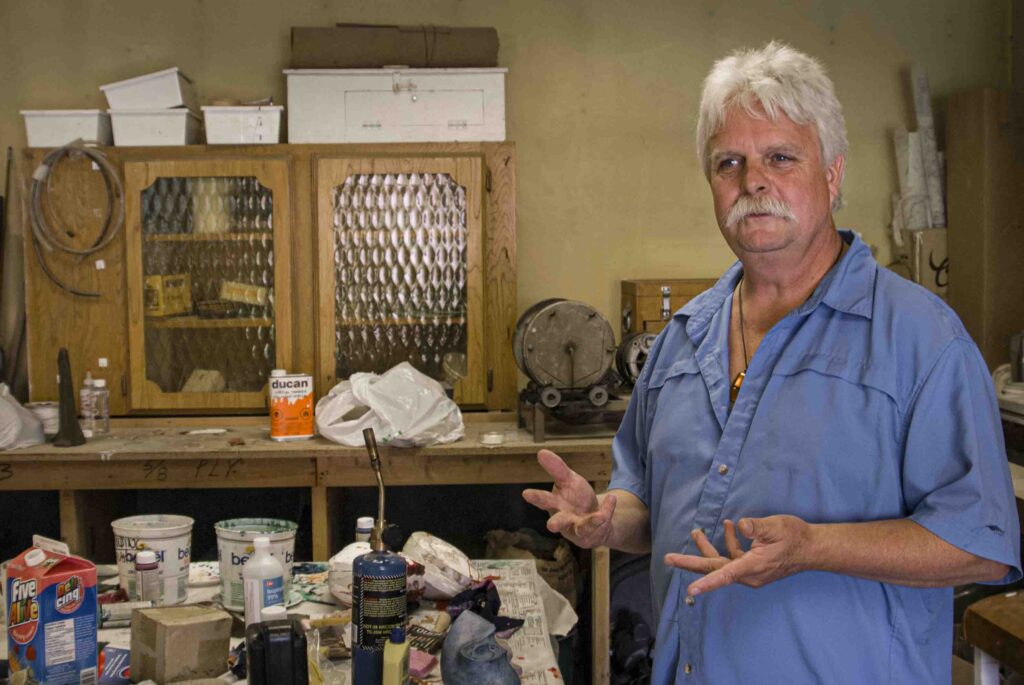
NWNL What leads you to believe that blending art and science can successfully highlight the need to pay attention to our environment. Do you mean to ask folks where we are going in the future. Are you trying to make them realize that we must protect our values?
PAT FIELD We need science to help correct decisions we have made in the past. Science tells us about consequences and predicts future issues that will occur if we carry on in terms of current trends. But science has limits because it can’t tell us what we should do, or why.
This is where art comes in!
Art, I think, can give us the passion and the emotion to promote in our communities. If we combine both knowledge and science to inform art, then art can create pieces that emotionally trigger people and communities to take action.
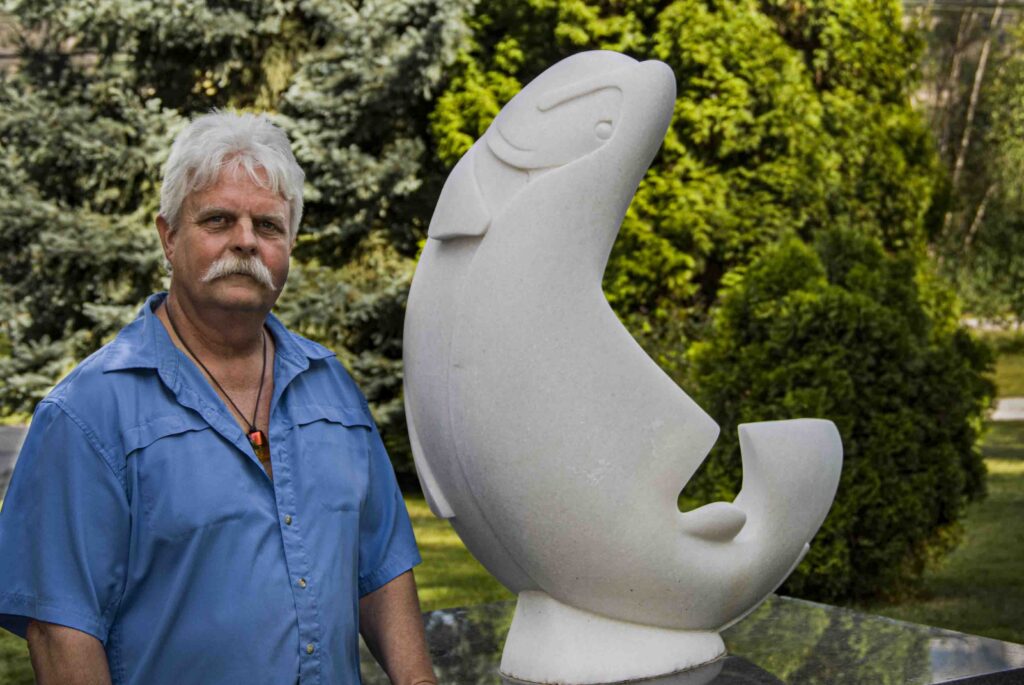
PAT FIELD Holistically, art has helped us become more able to develop a sense of purpose bigger than ourselves. It inspires us to broaden our focus in multi-disciplinary ways. If you are a dancer, you have value in society. If you are a scientist, you have value in society. If you work in the pulp mill, you have value in society. The same is true for the football coach or the soccer coach, the dance teacher, the poetry reader, and the storyteller.
We need to combine nature and culture together. We need both science and art in order to make decisions. Our actions shouldn’t be solely based on some kind of statistical outcome. Our actions should be based on why we think it is important to make a certain decision. And art can help us get there. I don’t think science can do that as well as art can.
NWNL So well said, Pat. Thank you for all the avenues you pursue to raise our awareness!
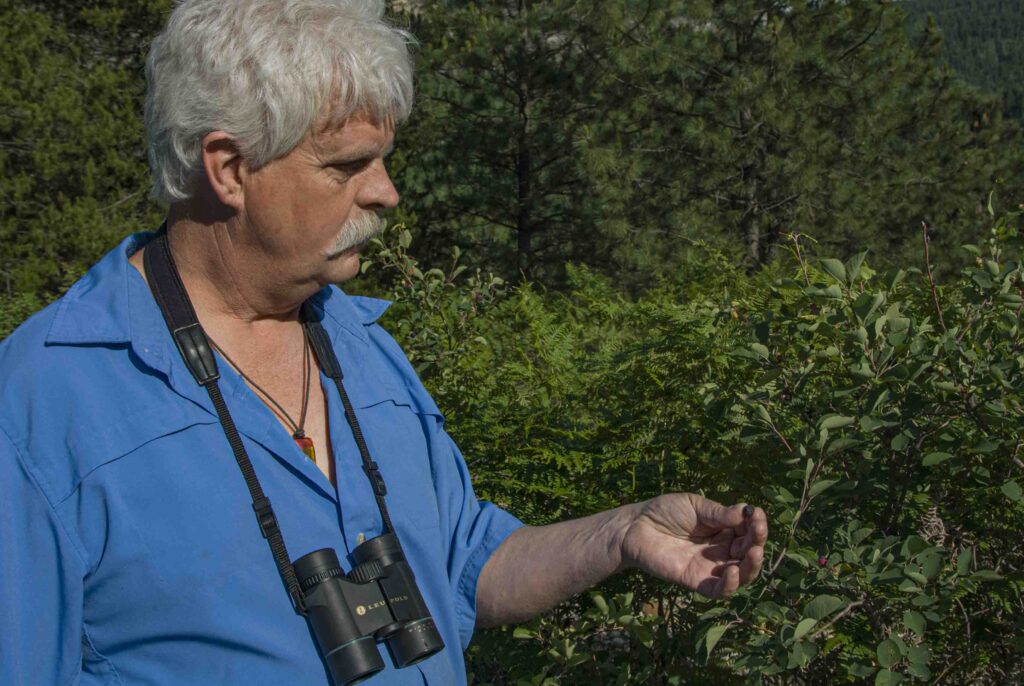
Posted by NWNL on November 15, 2023.
Transcription edited and condensed for clarity by Alison M. Jones.
All images © Alison M. Jones, unless otherwise noted. All rights reserved.
